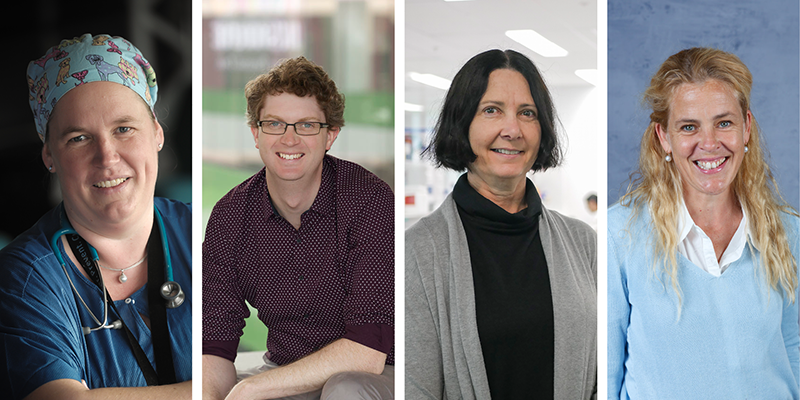Search
Research
Numerical simulation of aerosolised medicine delivery through tracheostomy airwaysThe administration of inhaled antibiotics to patients with upper or lower respiratory infections is sometimes conducted via a tracheostomy airway. However, precise dosing via this route remains uncertain, especially in spontaneously breathing paediatric patients.

News & Events
Inaugural Byron Kakulas medal awarded to Perioperative Medicine TeamA research team dedicated to making anaesthesia and surgery safer and more comfortable for babies and children has been awarded an inaugural Byron Kakulas Medal by WA’s Perron Institute.

News & Events
Funding boost to help turn research into practical changeResearch projects sharing in a $2.1 million funding boost will seek to translate research findings into changes that benefit patients and help the health system run more efficiently.
Research
Propofol, Anesthesia, and Neurocognitive Outcomes in Patients with Pediatric Leukemia: Are We Missing the Forest for the Trees?Britta Regli-von Ungern-Sternberg AM FAHMS MD, PhD, DEAA, FANZA Chair of Paediatric anaesthesia, University of Western Australia; Consultant
Research
Perioperative steroid prophylaxis for adrenal insufficiency, a single-centre experienceBritta Regli-von Ungern-Sternberg AM FAHMS MD, PhD, DEAA, FANZA Chair of Paediatric anaesthesia, University of Western Australia; Consultant
Research
Efficacy of a hybrid technique of simultaneous videolaryngoscopy with flexible bronchoscopy in children with difficult direct laryngoscopy in the Pediatric Difficult Intubation RegistryChildren with difficult tracheal intubation are at increased risk of severe complications, including hypoxaemia and cardiac arrest. Increasing experience with the simultaneous use of videolaryngoscopy and flexible bronchoscopy (hybrid) in adults led us to hypothesise that this hybrid technique could be used safely and effectively in children under general anaesthesia.
Research
High-flow nasal oxygen for children's airway surgery to reduce hypoxaemic events: a randomised controlled trialTubeless upper airway surgery in children is a complex procedure in which surgeons and anaesthetists share the same operating field. These procedures are often interrupted for rescue oxygen therapy.
Research
Beta Agonists for Prevention of Respiratory Adverse Events in Children Undergoing Adenotonsillectomy: Long-Acting, Short Acting, or Not ActingAdenotonsillectomy is one of the most common surgical interventions in children, and while generally safe, it is associated with a risk of significant adverse events. In this issue, Kim et al report a prospective randomized controlled study comparing preoperative use of a tulobuterol (longacting beta agonist) dermal patch with placebo on the incidence of perioperative respiratory adverse events (PRAEs) in children undergoing adenotonsillectomy.
Research
Anaesthesia related mortality data at a Tertiary Pediatric Hospital in Western AustraliaAnaesthesia related mortality in paediatrics is rare. There are limited data describing paediatric anaesthesia related mortality. This study determined the anaesthesia related mortality at a Tertiary Paediatric Hospital in Western Australia.
Research
Kids Voices, the perioperative experience of emergency surgery from children's perspectives: A qualitative studyThe study aimed to better understand children's emergency perioperative experience, a little researched topic. Current literature shows discrepancies between child and adult perceptions for the same healthcare experience. Acquisition of knowledge from the child's perspective can be utilized to improve perioperative care.
